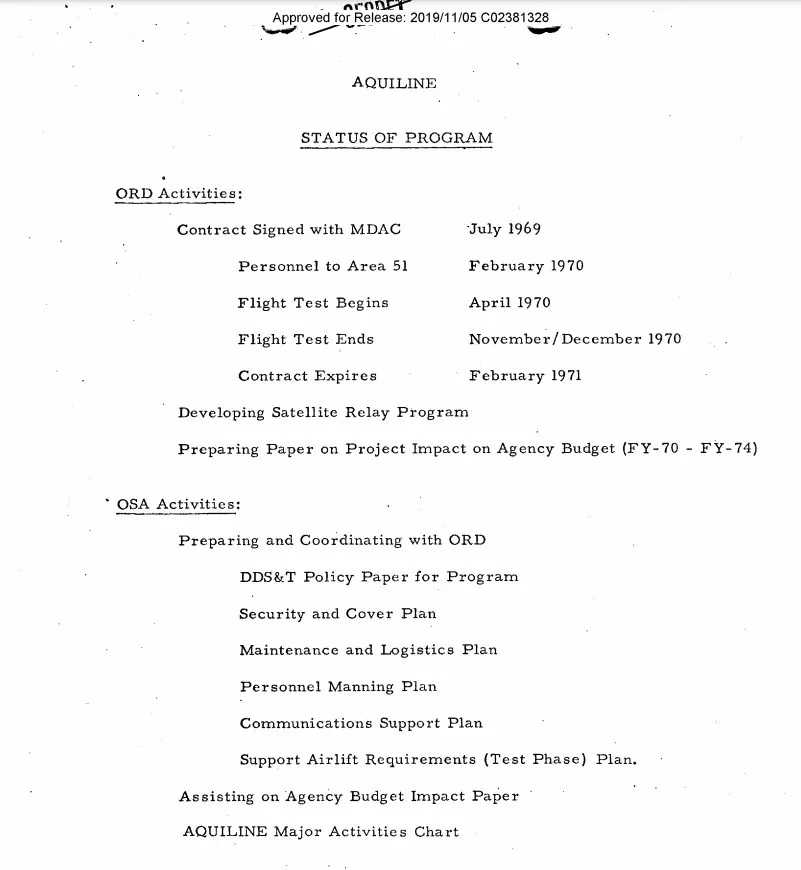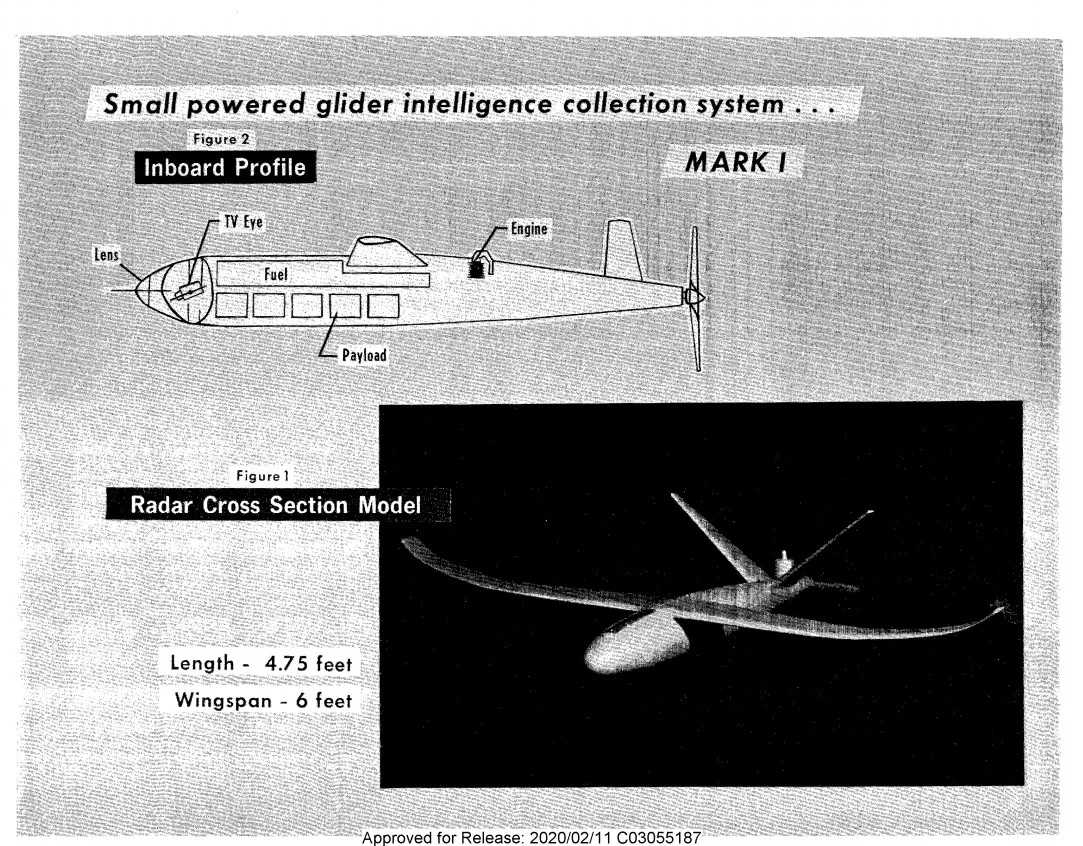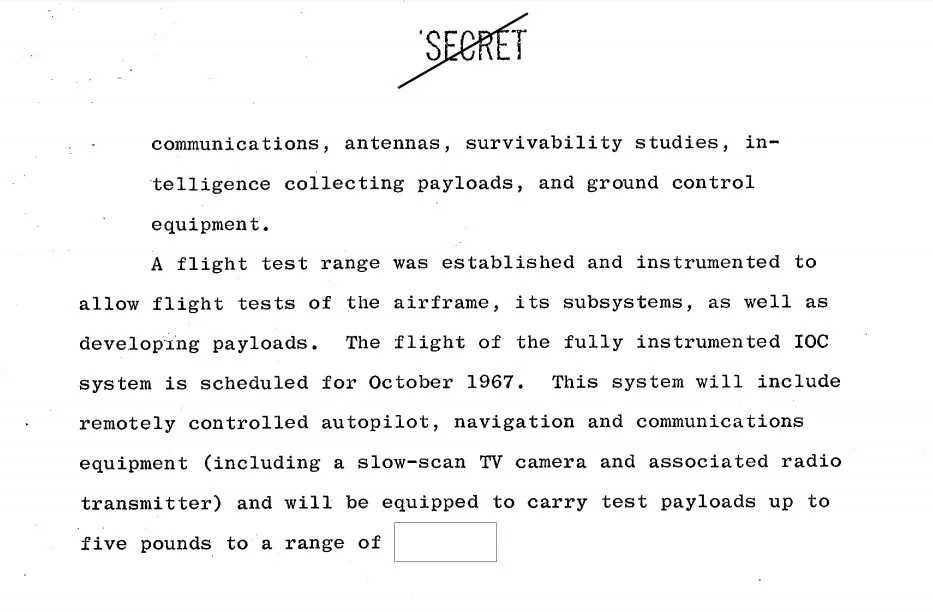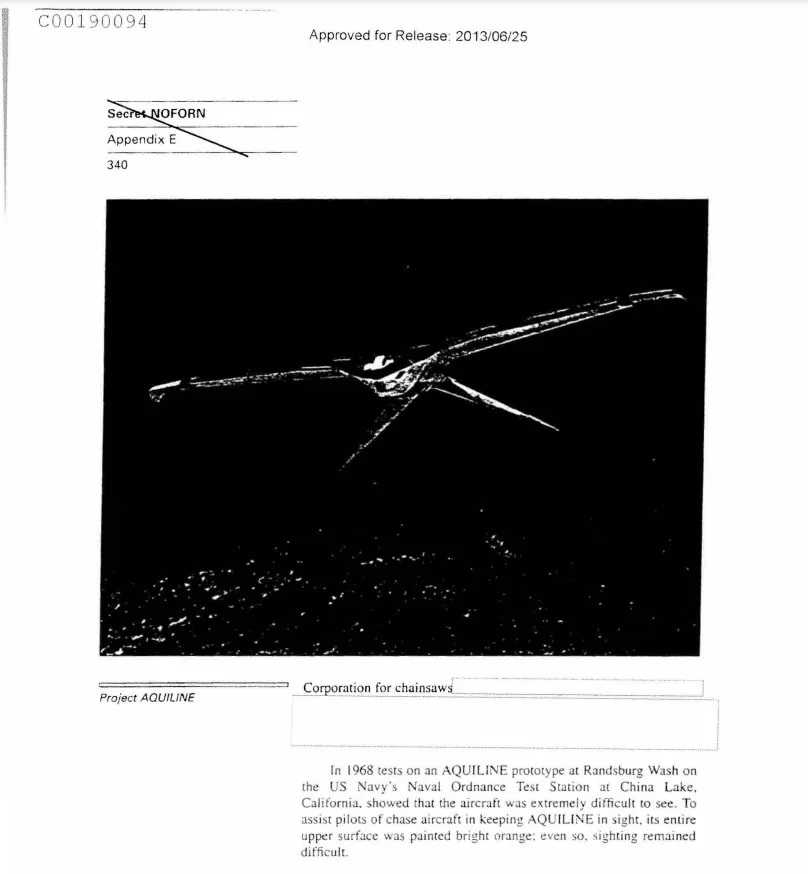Project Aquiline was one of the most unusual and complex spying projects during the Cold War. The idea was to create 12 bird-shaped drones powered by nuclear energy that could fly for up to a month. These drones were meant to be robotic spy planes and deliver secret items, but the project was never finished.
The CIA wanted Aquiline to be the first uncrewed system for gathering intelligence. Its goal was to gather information in areas where access was restricted secretly. The drone, designed by McDonnell Douglas (a defense company known for fighter jets), was very different from the company’s usual aircraft.
Aquiline was a small drone meant to be kept as close to bird-like size as possible—five feet long, 7.5 feet wide, and a takeoff weight of 83 pounds—under the constraints of the time’s technology. A silent 3.5-horsepower, four-cycle engine would give the drone a speed of 47 to 80 knots and an endurance of 50 hours and 1,200 miles. Aquiline’s maximum altitude was estimated at 20,000 feet. CIA file: https://www.cia.gov/readingroom/collection/aquiline
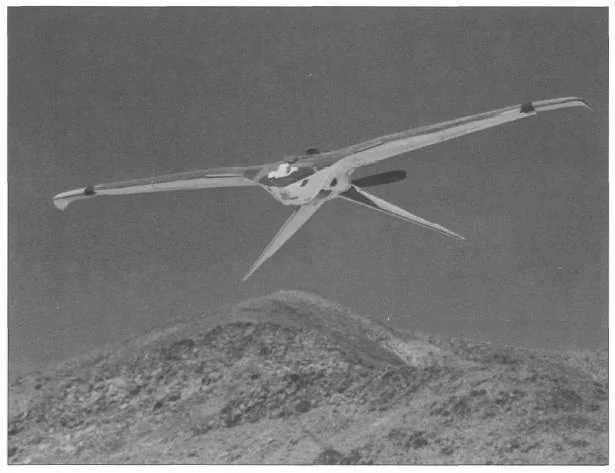
Nuclear power was supposed to make Aquiline fly even farther. The CIA suggested adding a system that would use the heat from decaying radioactive materials like plutonium to create electricity. This system, made for deep space missions, would allow the drone to stay in the air for up to 30 days or travel 36,000 miles.
Aquiline was built to carry cameras and spy equipment. It could take photos from a lower height than the U-2 spy plane and collect electronic signals from radios, radar, and other devices for later study.
The CIA described Aquiline as a “small, bird-like surreptitious vehicle with sufficiently small acoustic, visible, and radar cross-section to permit it to operate in the natural physical signal environment of living birds.” Radars and human sentries at sensitive sites would mistake Aquiline for a bird and pay little attention to it.
Aquiline would be launched, controlled, and brought back by mobile teams on the ground. These teams could operate Aquiline from areas near the Soviet Union or China, like Taiwan, Turkey, Norway, or other places, to make sure the drone could fly over enemy land for a longer time.
The small drone would send its data to a modified DC-6 (later switched to a U-2R spy plane) flying nearby. This way, the drone wouldn’t need to carry its data storage, since storage at the time was bulky and heavy, using punch cards, tape, or large hard drives, which would use up too much weight and power.
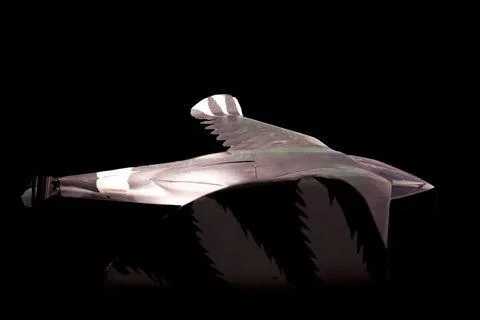
The bird drone was supposed to be developed at Area 51, with various documents listing the personnel requirements and what it would take to regularly fly engineers to and from the mysterious base. The program was top secret, with access doled out on a strictly “need-to-know” basis. The program was so secret that it recommended personnel be recruited two years before the first flight to ensure enough personnel could pass the necessary security checks.
In 1969, the CIA agreed with the McDonnell Douglas Astronautics Corporation (MDAC) to start working on technologies for the Aquiline program. In 1970, people were sent to Area 51 to begin flight testing. This testing was planned to end in early 1971 when the contract was finished. It was expected that by then, a functioning Aquiline drone would be ready, and the program would become fully active.
Exact specifications and design details are scarce, but what is known is that Aquiline drones were made to resemble birds and featured a single-tail propeller. Initially, the prototypes were powered by chainsaw motors. In one memo in the CIA’s reading room, the Aquiline drone is referred to as a “high characteristic operating model plane with a lot of expensive gadgetry.”
Sensor systems were embedded in the aircraft’s nose and included optical cameras infrared sensors, and even electronic intelligence packages. The drones were intended to have also been able to drop “black box” sensor systems into hostile territory, as well, so some form of payload-carrying capability must have been included in at least some of the Aquiline designs. Specifically, one of the CIA’s documents states that one of the test drones was designed to carry payloads weighing up to five pounds.
The Aquiline drones were hard to spot during testing, so engineers painted one bright orange to make it easier for a chase plane to see during a test flight. Even with the paint, the chase plane crew still had trouble spotting the drone in the air.
The exact range of the Aquiline drones remains unknown and is redacted in all of the CIA’s declassified documents.
However, one account states that Aquiline was able to fly for 130 miles while obtaining “very high-resolution photography,” while another document states one of the proposed mobile control units would have a range of 1,200 miles. A dedicated satellite was planned to offer a long-distance communications link for Aquiline drones but was never launched.
Aquiline drones had an impressive design, but they had a big problem: they didn’t have landing gear. Instead, they had to land by crashing into nets. This often damaged the drones’ wings and propellers, leading to delays because of constant repairs. Three Aquiline prototypes were destroyed during these landings.
In a personal account hosted on RoadrunnersInternationale.com, a site that preserves “the history of the aviation pioneers and programs that developed the U-2, A-12 ,and YF-12 during the Cold War,” John H. Meierdierck, retired Air Force Lieutenant Colonel, offers a brief recollection of the Aquiline program as he remembered it, writing:
The vehicle was a six-foot-long plane that had a small pusher prop and looked like an Eagle or Buzzard when it was in the air. It was designed to fly at very low levels along communications lines and intercept their messages. It also had a small television in the nose as an aid to navigation and to photograph targets of opportunity. There were several successful flights some crashes [reason unknown] and some lousy landings.
Read also:
- This Mexican Scientist Claimed We Live in a Holographic Matrix, Disappears Mysteriously After It
- Tucker Carlson Says ‘There Are Forces That Are Not Human, Existing in a Spiritual Realm We Cannot See’
- Tom DeLonge Claimed There’s A Massive Underground Pyramid In Alaska, Larger Than The Great Pyramid Of Giza, Potentially Suppressing Human Consciousness
It’s unclear why Aquiline was canceled. It was meant to be a very complicated program, dealing with issues like stealth, data transfer, and propulsion in a tiny design. Using a nuclear power source would have made it even more complicated, and the technology of the 1960s might not have been enough to handle it.
Aquiline also depended on a trick, and if the Soviets or Chinese discovered it, their anti-aircraft weapons or MiG jets could have easily shot it down. In the end, Aquiline was just an idea held by a few people in the intelligence community.
If the rumors are to be believed, there’s a chance an example or two of Aquiline still exists among the other strange birds caged up in the darkness at Area 51.




